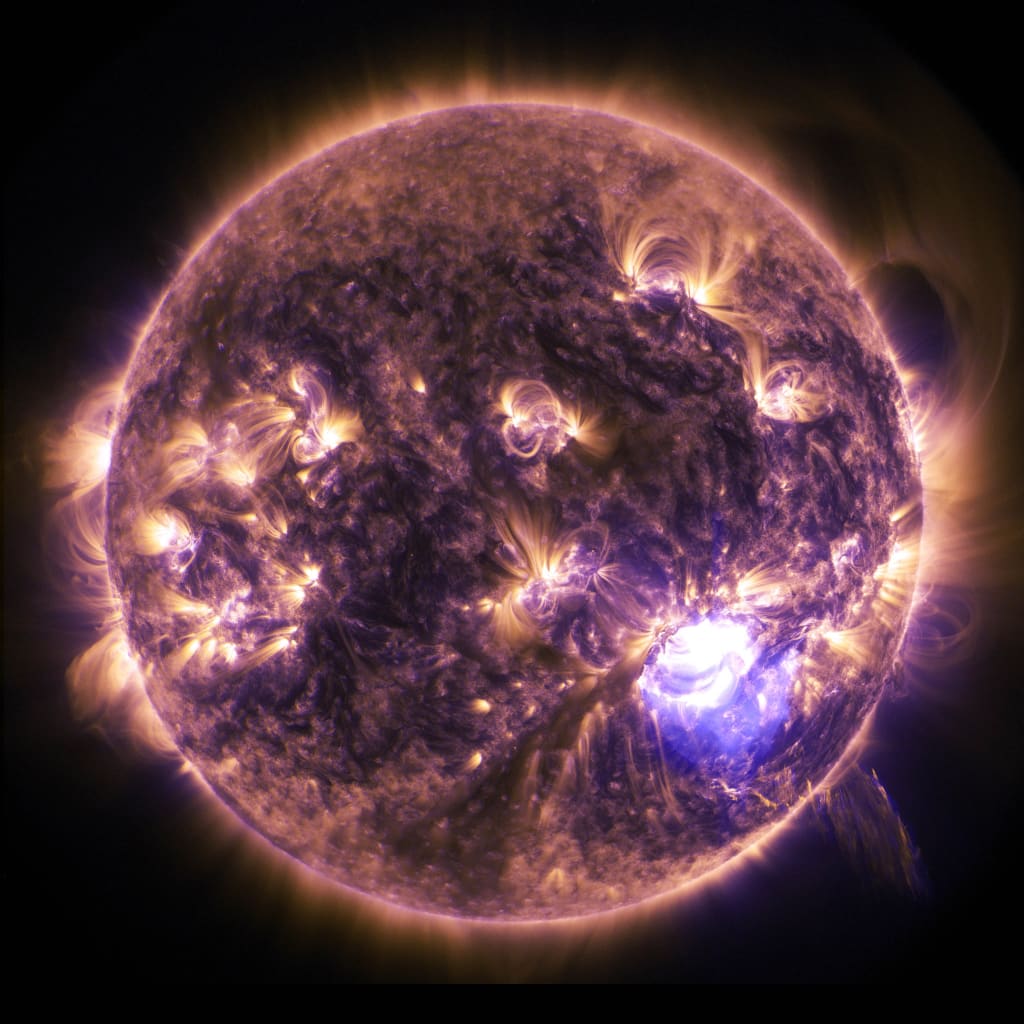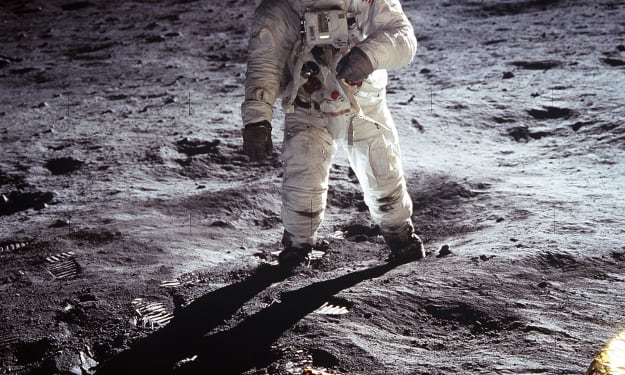Things That You Don't Know About The Space
The Sun: Not What You Thought It Was

The Sun: Not What You Thought It Was
For centuries, humans have looked up at the sky and marveled at the bright yellow ball of fire that is the Sun. But what if we told you that the Sun is not actually yellow, nor is it on fire? In fact, the Sun is a ball of gas, mostly made up of hydrogen and helium, and it emits most of its energy at a wavelength that's close to green. This is why, if you were to look at the Sun from the International Space Station, it would appear white.
Scientists determine the temperature of a star by the color spectrum it emits. Each color has its own wavelength, and astronomers measure those wavelengths to tell how hot a star is. Cooler stars appear red, while the hottest of the stars look blue. Our Sun emits most of its energy at a wavelength that's close to green, but because it also emits other wavelengths, all these colors mixed together and your eyes see this vibrant mixture as white.
If our star was actually yellow, it would be about 800 degrees Celsius cooler, and our Solar System's habitable zone would shrink, making Earth a frozen, lifeless rock.
But that's not the only thing you were wrong about. The Sun is hot, but it's not on fire. Burning is a chemical reaction of oxygen fuel, and like most stars out there, our Sun works more like a gigantic nuclear reactor, constantly fusing hydrogen atoms to create helium inside its core. This process releases enormous amounts of energy, and that's why the Sun is so scorching hot.
Explosions in space are also not what you might think. A spaceship can't go down in a violent blast because there's no air out there in space. No air means no oxygen, and no oxygen means no fire. Sorry, Star Wars fans.
It may seem that there are too many stars in the night sky for you to count, but actually, you can. According to the Yale bright star catalog, there are 9,110 stars that you can see from Earth with the naked eye. Try to count them all for yourself.
Movies make it look like you need to be an extremely skilled pilot to navigate the asteroid belt, but that's not true. The asteroid belt isn't some thick obstacle course of death. It does have trillions of space rocks that range in size from space dust to a quarter the size of the Moon. About 100,000 of these asteroids are over one kilometer wide, but they're very spread out. The asteroid belt between Mars and Jupiter is 225 million kilometers across, which is one and a half times the distance between Earth and the Sun, and this spreads the space rocks millions of kilometers apart. It's almost impossible for a spacecraft to collide with one.
If you were thrown out of the airlock into the vastness of space, you wouldn't turn into a popsicle right away. That's because to freeze, there has to be a heat transfer from space to your body, but heat or cold doesn't travel very fast in the vacuum of space. Your body would freeze, but it would take hours to happen, and by then, you'd be long dead from something else. And no, you wouldn't explode in space either. You would inflate, though. That's because nitrogen in your bloodstream would gather into bubbles and puff you up to double your size. But that's not what's going to kill you. It's the lack of oxygen. After 15 seconds in space, your brain wouldn't get enough oxygen through your blood, and you'd lose consciousness. After two minutes in space, your other organs would start to shut down. Game over.
Space seems incredibly cold, but it's not. In reality, space doesn't have a temperature at all. Temperature is defined by the speed at which particles move and the amount of energy they have. In the true vacuum of space, there are no particles to move around. That's why the vacuum is temperatureless. Of course, outer space isn't a perfect vacuum. It still has particles and radiation to produce heat. Some areas of space are actually really hot, like the space around stars. But the further away you get from stars, the more spread out the particles are, making those areas of space pretty chilly. Some dense gas clouds can get as cold as minus 263 degrees Celsius.
Mercury is the closest planet to the Sun, but surprisingly, it's not the hottest. It is extreme, though. During the day, the surface temperature reaches 430 degrees, and at night, it drops to minus 180. But the most hellish planet in the solar system is Venus. Mercury doesn't have an atmosphere to retain all that heat from the Sun. The venusian atmosphere, on the other hand, is very thick, and it creates a greenhouse effect. It's like global
About the Creator
Enjoyed the story? Support the Creator.
Subscribe for free to receive all their stories in your feed. You could also pledge your support or give them a one-off tip, letting them know you appreciate their work.






Comments
There are no comments for this story
Be the first to respond and start the conversation.